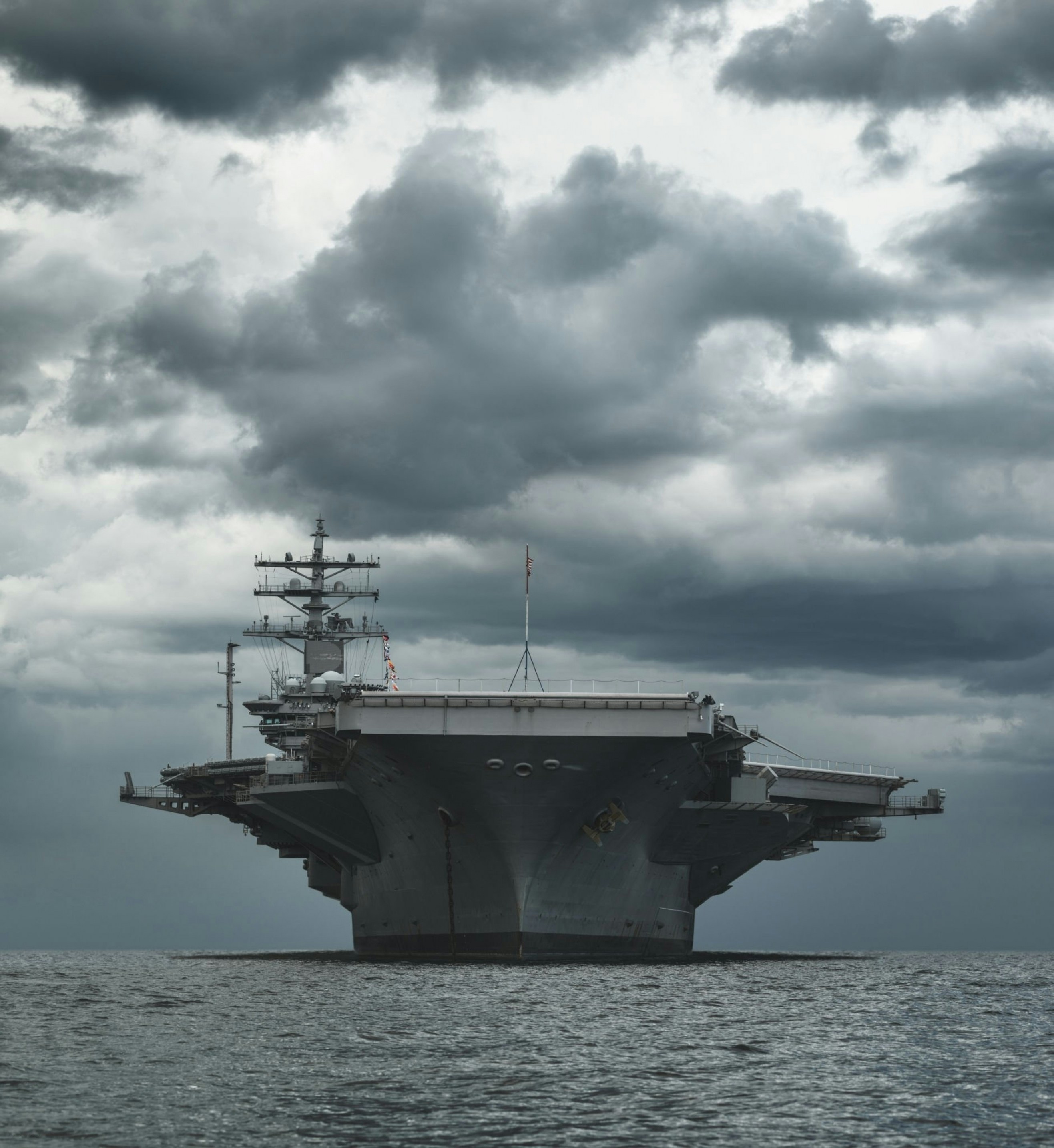There’s a certain poetry in the idea of warships turning the sea beneath them into the fuel that powers their planes above. It’s the kind of concept that sounds like either science fiction or military PowerPoint optimism, but this one called Project GENESIS or the more cinematic Sea Dragon is very real. And it might just change global energy logistics forever.
The US Navy’s Seawater-to-Jet-Fuel (S2J) programme aims to do something that borders on alchemy: pull carbon and hydrogen out of seawater and turn it into jet fuel. The trick lies in using the ocean’s abundance seawater contains roughly 140 times more CO₂ than air, and an enormous amount of electrical power, ideally from a nuclear reactor, to synthesise hydrocarbons right there at sea. If it works at scale, it could make carrier groups effectively immortal from a refuelling perspective.
A ship that fuels itself
The process is a neat bit of chemistry masquerading as wizardry. First, an electrochemical system known as the Electrolytic Cation Exchange Module (E-CEM) extracts both CO₂ and hydrogen from seawater. It does this by zapping seawater with an electrical current, acidifying it just enough to free the carbon dioxide trapped within while simultaneously producing hydrogen gas through electrolysis. Both gases are then combined and converted into liquid hydrocarbons via Fischer–Tropsch synthesis, the same chemical route Germany used to make synthetic fuel during the Second World War, only this time with the planet’s biggest carbon reservoir and zero oil tankers.
If that sounds like a mouthful, think of it this way: the ship drinks seawater and sweats jet fuel.
The numbers are equally surreal. A single nuclear-powered aircraft carrier, diverting about 200 megawatts of its onboard energy, could theoretically churn out over 80,000 gallons of JP-5 jet fuel per day. That’s enough to keep its air wing fully operational without waiting for vulnerable fuel convoys to arrive. Naval planners call this the end of the “tyranny of the logistics tail”, a poetic way of saying they no longer have to babysit slow, easily targeted oilers.
The real magic sits in the catalysts. Turning carbon dioxide into carbon monoxide efficiently is hard; doing it on a moving ship without creating a methane soup is harder. The Navy’s research partners at the University of Rochester, Pittsburgh, and OxEon Energy have refined potassium-promoted molybdenum carbide and iron-based catalysts to make the conversion stable and scalable. Early lab work achieved a 92% carbon extraction rate from seawater, with a 60% conversion into usable hydrocarbons already enough to make this a serious engineering project, not a fantasy.
The technology is now being commercialised by Sea Dragon Energy Inc., which received a $9.5 million DoD contract in 2025 to build a full demonstration system in California. The goal is to have a working shipboard unit by 2027, just in time for the US Navy’s broader push for “80% surge readiness.” It’s not just a coincidence.
For all its military origins, this project could end up transforming commercial aviation too. The same synthetic kerosene produced from seawater meets the sustainability standards for aviation fuel (ASTM 7566) and counts as carbon-neutral, provided it’s powered by low-carbon electricity. That’s crucial because the aviation industry is desperately short on Sustainable Aviation Fuel (SAF). As of 2024, SAF accounts for barely half a percent of global jet fuel use. If the Navy proves that fuel can be made from seawater efficiently, it opens the door to an entirely new global feedstock, one that doesn’t compete for land, food, or freshwater.
And make no mistake, the ocean has plenty to offer. Its carbon reservoir is roughly sixteen times greater than the entire atmosphere and land combined. That’s enough to run the world’s aircraft for centuries, assuming we don’t mind a few floating factories anchored to offshore wind farms quietly bottling jet fuel.
The catch, of course
There always is one. Seawater extraction produces brine, dense, salty waste that can suffocate marine life if mishandled. The process also depends on a massive and uninterrupted power supply, which for now limits it mainly to nuclear vessels. Replacing the reactor with solar or wind would be admirable, but the output would need to be vast and consistent to keep fuel flowing. In short, the chemistry is solved, but the physics and ecology still need careful management.
What makes the Seawater-to-Jet-Fuel project genuinely revolutionary isn’t just the chemistry, it’s the strategy. If ships can make their own fuel, they become truly independent energy ecosystems. No oil, no convoys, no dependency on volatile markets. For commercial aviation, it means a future where synthetic jet fuel can be produced offshore, at scale, without burning food crops or building massive CO₂ capture farms on land.
It’s the first practical attempt at a circular carbon economy that doesn’t require moral compromise or political gymnastics. And it’s happening quietly, in Navy labs and private research facilities, while the rest of the world debates bans on plastic straws.
For once, a military project designed for war might give the world something it desperately needs in peace: a sustainable way to keep flying.
